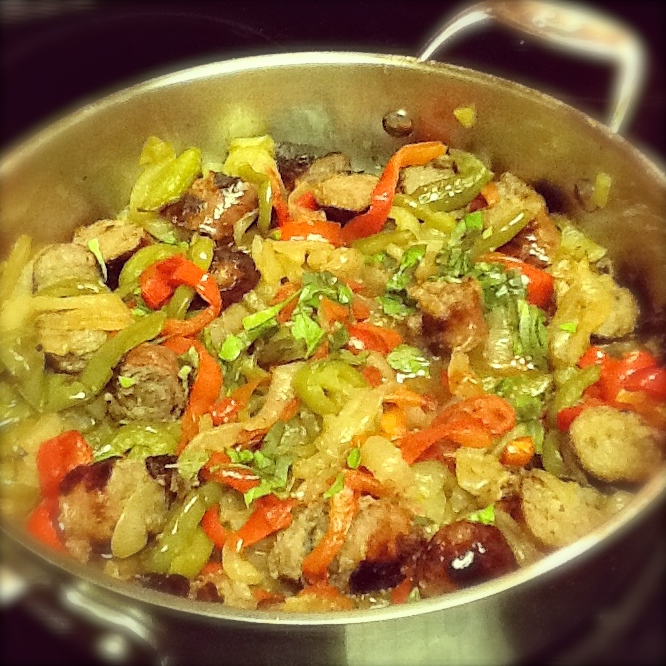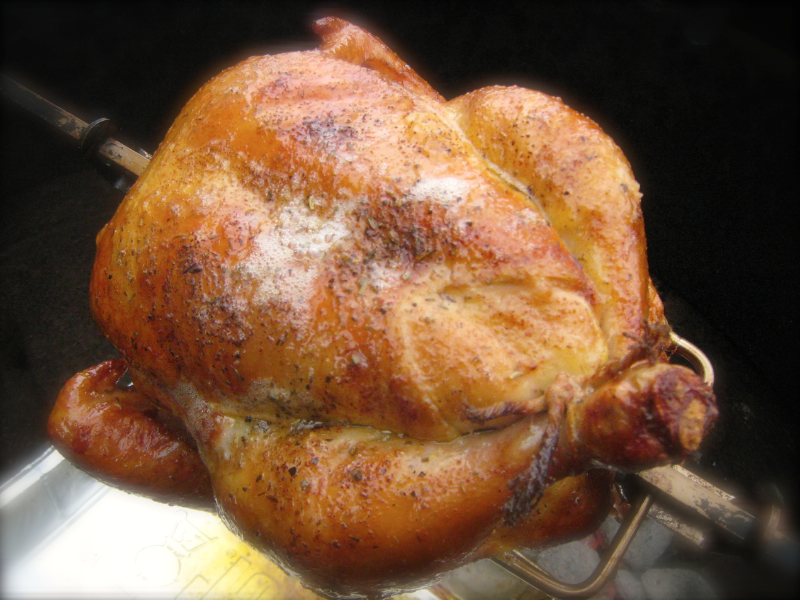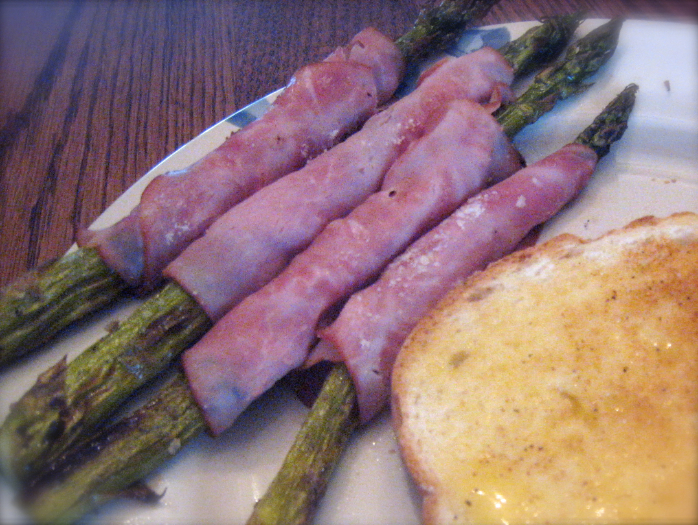
I cooked the peppers and onions in a pan on the grill, grilled the Italian Sausages, and then added them to a pan where I had sautéed garlic in olive oil, and finally stirred in some fresh-picked oregano and basil.
We served it with mostaccioli.

I cooked the peppers and onions in a pan on the grill, grilled the Italian Sausages, and then added them to a pan where I had sautéed garlic in olive oil, and finally stirred in some fresh-picked oregano and basil.
We served it with mostaccioli.

With a deep snow cover here, and more on the way over the weekend, I am longing for a hot Summer day on the back patio with a nice Michelada.
Stay warm, people. Spring is just around the corner, right?

When my wife gave me a rotisserie attachment for our Weber Kettle at Christmas 2012, the first thing I cooked on it was a whole chicken. After a year of experience, I think I’ve finally mastered the process.
I cooked a five pound chicken for Sunday dinner this week, and it turned out better than any I’ve ever made or tasted. I dry brined with salt and pepper on Saturday evening, then sprinkled on some Herbs de Provence and garlic powder before it went on the grill. It took a little over an hour to cook. We served it with drip pan potatoes, salad and green beans.
Learning this recipe changed my entire approach to cooking on the Weber. If you’re interested in the rotisserie, take a look at Mike Vrobel’s blog. His book is the bible on rotisserie cooking outdoors.

For Sunday Brunch this morning, I grilled some asparagus wrapped in ham.
I put the asparagus on a perforated Weber grill pan, hit it with some olive oil spray and sprinkled with kosher salt and cracked black pepper. Grilled it for five minutes or so that way (flipping the asparagus over once) and then sprinkled with Parmesan cheese before wrapping in the ham. Then it all went back on the grill for just a few more minutes to finish.
We served it with a drizzle of Dijon mustard and honey as a condiment, along with some toast and fresh fruit.
Simple and delicious.

My apologies for not posting this earlier. I’m sure that you’ve been waiting impatiently to hear how our Thanksgiving Turkey turned out on the rotisserie.
I did make some adjustments from the trial run, using a fresh turkey, taking care to properly dry brine and stuff the bird, using hickory wood for smoke, and icing the breast prior to cooking to help keep it rarer. After the charcoal was nearly gone under the rotisserie, I moved the turkey to the gas grill to finish cooking so that I could use a probe thermometer to monitor doneness more easily.
In short, it turned out really well. Here are just a couple of observations.
1) I’m not sure that I’d spend the money on a fresh bird again. This one turned out better than the trial run bird, but I’m not sure that it can be attributed to a fresh bird. I expected it to be “out of this world” better than any turkey I’d ever tasted, and it just wasn’t. Nothing wrong with it, but nothing notable in texture or taste that is distinctive to it not having been frozen. If a frozen bird is good enough for Alton Brown, I’ll save myself $60 next year.
2) My wife thought this was the best turkey she’d ever tasted. My father-in-law thought that the dark meat was a little dry. I thought that the doneness and texture was perfect, but it was missing a savoriness for me. This may be because I’m used to turkeys that come “pre-basted.” We’ll see if next time the combination of pre-basting for flavor and my own dry brining for additional flavor and texture will strike the right balance. The worst thing you can say about a Butterball or other pre-basted bird is that you’re essentially paying for brine. As cheap as supermaket birds are, I won’t object to that.
Part of the issue may be that I’m comparing the rotisserie turkey to rotisserie chicken, which always seems to turn out mouth-watering delicious. I want the turkey to be like that. Guess we’ll just have to keep working at it.
Or maybe I should cook chickens for Thanksgiving next year.
Copyright © 2025 Noebie Digital Media · Powered by WordPress and the Genesis Framework